Your Expert Guide to the Mayan Ruins in Yucatan (2024)
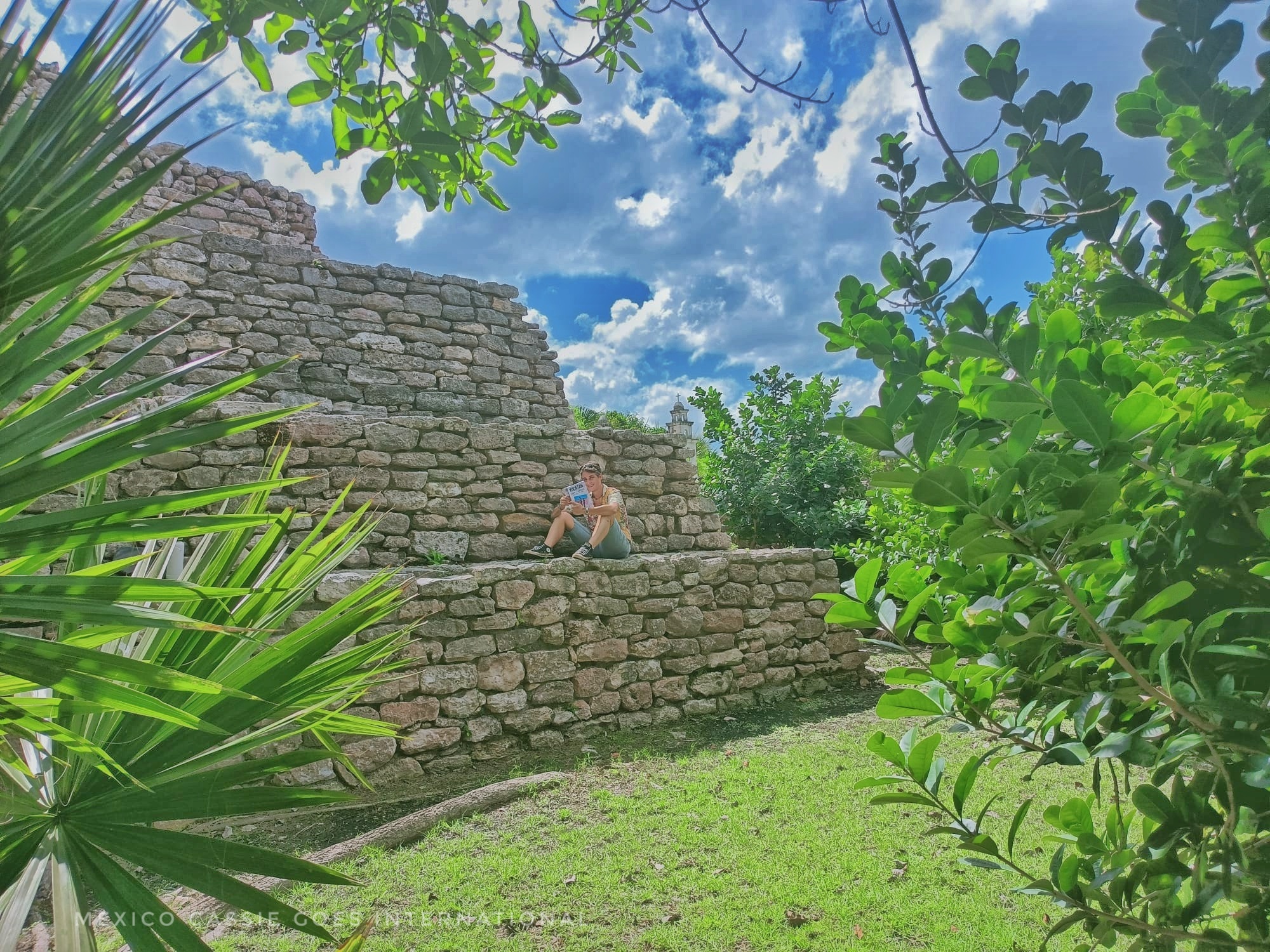
You’ve probably heard of Chichén Itzá, the most famous of all the ruins, but did you know that there are dozens of ancient Mayan cities and sites across the peninsula? If you’re visiting Yucatán for a vacation you probably aren’t looking to visit every ruin on the peninsula but perhaps you’re considering a day trip or two and would like to know more about the Mayan ruins around the state of Yucatán and how to see them.
⭐️ In this article, you’ll find everything you need to plan a trip to the Mayan ruins of your choice, from the biggest names such as Chichen Itza and Uxmal, to the smaller, barely known sites such as Chacmultun and Ake.
🏆 5 of the 10 on my list of the best ruins on the Yucatán Peninsula are actually in Yucatán state.
A Note on Language: Maya or Mayan?
📌 You’ll see “Maya Ruins in Yucatan” and “Mayan Ruins in Yucatan” as you do research for your trip, but which is correct?
Scholars say that Mayan should be used to refer to the languages spoken by the Maya people, both past and present.
Maya is used to refer to people, places and culture.
The correct term is “Maya ruins” but “Mayan ruins” is more common. It’s also more correct to refer to the “Maya people” but you’ll often read “Mayan people” or “ancient Mayans”.
Some also prefer the term “archaeological site” to “ruins” when discussing ancient Maya sites.
The Details: Maya Ruins in Yucatan
📌 The sheer number of Mayan ruins in Yucatan is just astounding and there are bound to be plenty more yet undiscovered, and hiding in the forests.
📌 Yucatan is so flat that they say that every time you see a hill, it’s most likely an unexcavated Maya ruin just waiting for us. The Maya Tren works are revealing remnants of ancient settlements as they excavate and build so watch this space for new discoveries!.
📌 INAH (Instituto Nacional de Antropologia e Historia) controls almost the all ruins and many museums in Mexico. They set the prices and the opening times.
📌 Mayan ruins are open 8 am to 5 pm every day and Mexican residents can enter for free on Sundays.
There are affiliate links in this article. If you click and make a purchase I could make a small sum at zero cost to you. Thank you!
What To Take To Visit Mayan Ruins In Yucatan
💦 Water – Exploring around Yucatán is thirsty work. Be sure to go with a good water bottle.
🧢 Hat and sunscreen – There isn’t always much shade at these sites.
🥨 Snacks – Smaller sites don’t have anywhere to buy drinks or snacks so if you’re a snacker, you’ll need to take them with you.
👟 Good shoes – Many sites allow you to climb so wear shoes you’re comfortable climbing in.
💳 Mexican Residency card – If you have one and you’re visiting on a Sunday.
💵 Cash – You’ll need Mexican pesos to pay to enter the Mayan ruins in Yucatán.
📚 – Yucatán with Kids Guidebook (written by everyone’s favourite Yucatán expert, ME)
🐾 – We’re sorry but pets aren’t permitted at the ruins. There is one small ruin in Mérida that can be visited with your fur baby, though
How to Visit the Mayan Ruins in Yucatán
🚗 The easiest way to visit is with your own transport. If you plan on exploring then I highly recommend renting a car.
TOP TIP: When using a GPS be sure to search for your ruin of choice using “Zona Arqueologica de xxx” to be sure you don’t wind up in a village with the same name as your ruin.
🚍 Public transport is available between the big cities and small towns. If you know which town your ruin is near then you could take a colectivo (minibus) and ask the driver to let you off nearby. Of course, this requires more time as you’re at the mercy of bus timetables.
🚂 As of early 2024, the Maya Train is somewhat operational, which offers yet more exciting experiences in this region.
Tours and Guides
📌 If you choose take a guided tour to a ruin you save having to think about transport. You’ll also learn a lot and probably see more than you would if you went alone.
If you arrive at one of the bigger archaeological sites and then decide you want a guide you’ll be able to find one there.
⭐️ I have recommended tours I think are good below.
➡️ Let’s talk safety in Yucatán for a second. Yucatán is Mexico’s safest state, making it a perfect spot for a vacation. If you’re interested in reading more about whether Yucatan is safe and how to look after yourself while in Yucatan, you know I’ve got you covered!
Yucatan or Yucatan Peninsula?
📌 Note that this article is dealing with the ruins in the state of Yucatan, not across the whole Yucatan Peninsula. If you’re interested in knowing more about ruins in the other two peninsula states, Quintana Roo and Campeche, you’ll need to check out my articles on those places.
Quintana Roo
The most famous ruins are Tulum and Coba (home to the tallest pyramid, Nohuch Mul).
➡️ Read more in my articles about the ruins of Quintana Roo, Cancun, Tulum and Playa del Carmen
Campeche
The most famous ruins are Calakmul and Edzna although Campeche is home to many incredible Mayan pyramids and ancient cities hidden deep in the Yucatan jungle with the howler monkeys.
➡️ See more in my articles about the Ruins of Campeche, what to do with a long weekend in Campeche
📍 It’s also worth noting that Palenque, one of the best Mayan ruins, is located in the dense jungle of Chiapas (still in southern Mexico), and is not technically on the Yucatan Peninsula at all. However, it is possible to visit from the peninsula if you’re up for an epic road trip.
🚂 When the Maya Train is fully functional, it will make access to Calakmul and Palenque far easier.
Visiting Maya Ruins in Yucatan
Key to Facilities Available
🚾 bathrooms 🛍 souvenir shopping 🌮 snacks 💦 water
Mayan Ruins In Yucatan: The Big Names
The biggest Mayan ruins in Yucatan are, of course, Chichén Itzá, Uxmal, and Dzibilchaltun. Ek Balam and Izamal are fairly well known so they’re included in this section too.
⭐️ You’ll easily be able to find tours to these well-known sites.
⭐️ Generally the bigger name sites are more expensive to visit than the lesser known locations (except Izamal, which is free).
Chichén Itzá
🚾 🛍 🌮 💦
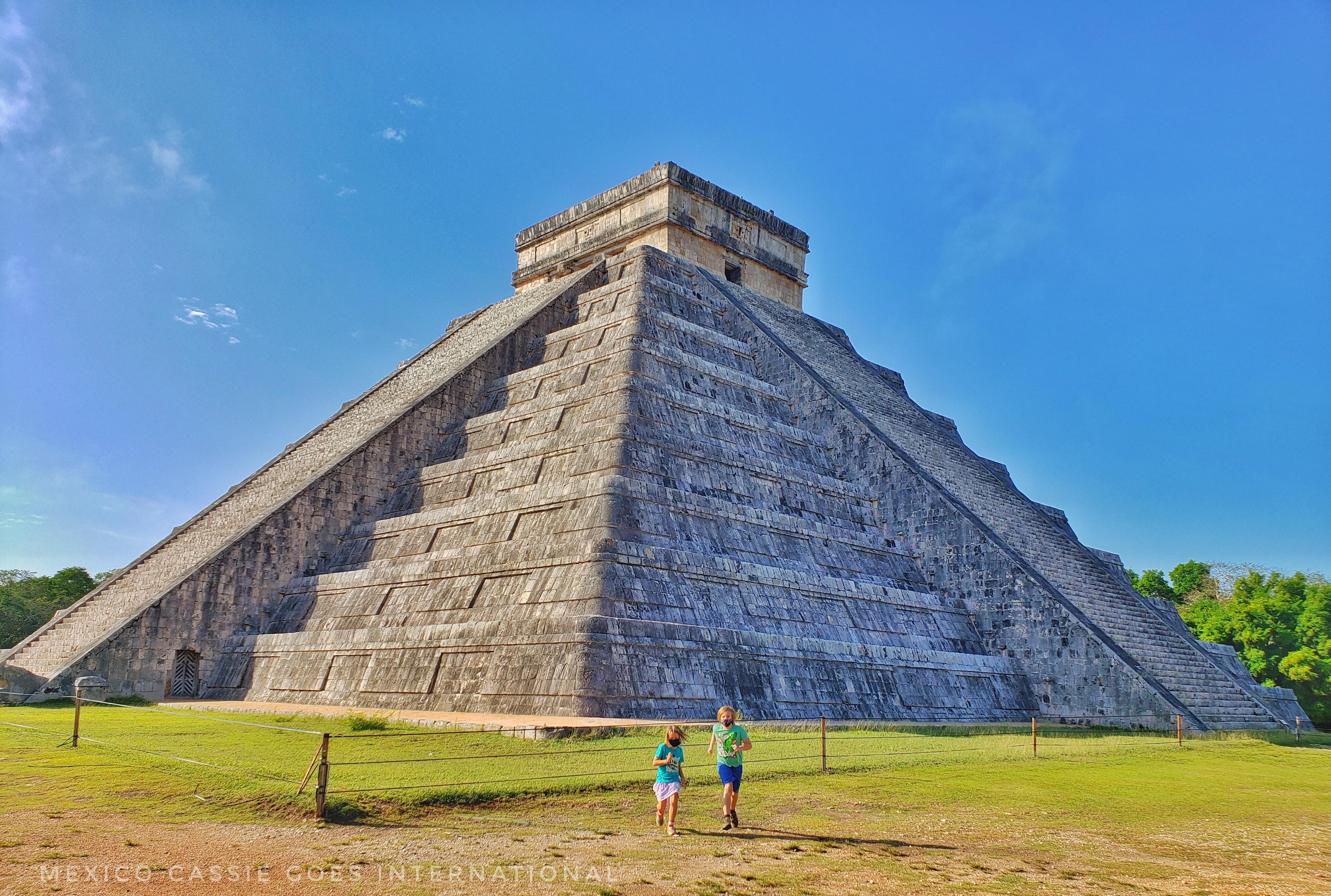
📌 Chichén Itzá is both a UNESCO World Heritage Site and one of the seven modern wonders of the world and yes, it’s stunning and really shouldn’t be missed.
Chichén Itzá was one of the most powerful Maya cities that ever existed.
The Chichen Itza site is huge and there’s a lot to take in in just one day. Apart from El Castillo, you can’t miss the ball courts (there are 13, one of which is the largest in the whole of Mesoamerica), the Thousand Columns Complex, the Warriors’ Temple and two cenotes, which by the way are known to have been the site of many human sacrifices.
The main draw of Chichen Itza is the perfectly restored pyramid (known as El Castillo in Spanish and the Pyramid of Kukulcan in Mayan). This pyramid was constructed around 800 CE. Within the pyramid is a smaller pyramid that was built many years before the one you see today. And, within this smaller pyramid, archaeologists found a stone sculpture of Chac Mool and a throne made in the form of a jaguar.
Top Tip: If you’re lucky enough to visit Chichen Itza on an equinox, be sure to take note of the snake shadow that appears to descend (or ascend) the 365 steps of El Castillo.
⭐️ NEWS FLASH! Did you know that there is a great deal that visitors are not permitted to see at Chichén Itzá? Archaeologists are still actively working and learning here and there’s much that isn’t open to the public but in September 2023, some of Old Chichen was opened to the public for the very first time.
Top Tips for Visiting Chichén Itzá
⭐️ If you can, arrive early as Chichen Itza is never not busy. You’ll need to be prepared for crowds if you can’t get there early.
⭐️ There are a lot of vendors inside the Chichén Itzá complex. Stop and browse, chat and haggle politely. I have had many great conversations with the sellers here, they are always friendly and interesting. Don’t get stressed out by how many stalls there are. If you’re not interested in buying, no one is going to harass you.
⭐️ Whether you visit Chichén Itzá as part of an organised tour or alone, do not forget to include a cenote swim in your day.
Note: You cannot climb anything at Chichén Itzá
Where is Chichén Itzá?
📍Chichén Itzá is brilliantly located in the centre of the Yucatán Peninsula and is therefore easily visitable from wherever you’re staying.
📍The nearest village is Piste and the nearest town is the pueblo magico of Valladolid.
📍 Cancun – Chichén Itzá: just under 3 hrs (200km)
📍 Valladolid – Chichén Itzá: 45 minutes (40km)
📍 Mérida – Chichén Itzá: 1hr45 (120km)
What to do near Chichen Itza
➡️ Explore the pueblos magicos of Valladolid and Izamal
➡️ Go to the beach – Yucatán’s Emerald Coast has some incredible beaches
Hotel Recommendation Near Chichen Itza
⭐️ My favourite hotel to stay in when visiting Chichén Itzá has to be Hotel Chichén Itzá. It’s just one mile from the entrance, offers great views over the Chichen Itza site and has a pool for when you return hot and dusty and tired.
Top Tour Recommendations for Visiting Chichen Itza
Most tours to Chichen Itzahttps://www.chichenitza.com/?idaff=1636 will also include a stop at a refreshing cenote.
⭐️ 12 Hour Tour from Riviera Maya: see Chichen Itza, swim in a cenote, enjoy a buffet lunch and explore Valladolid
⭐️ Full Day Tour from Mérida: see Chichen Itza, Cenote Yokdzonot and Valladolid
Uxmal
🚾 🛍 🌮 💦
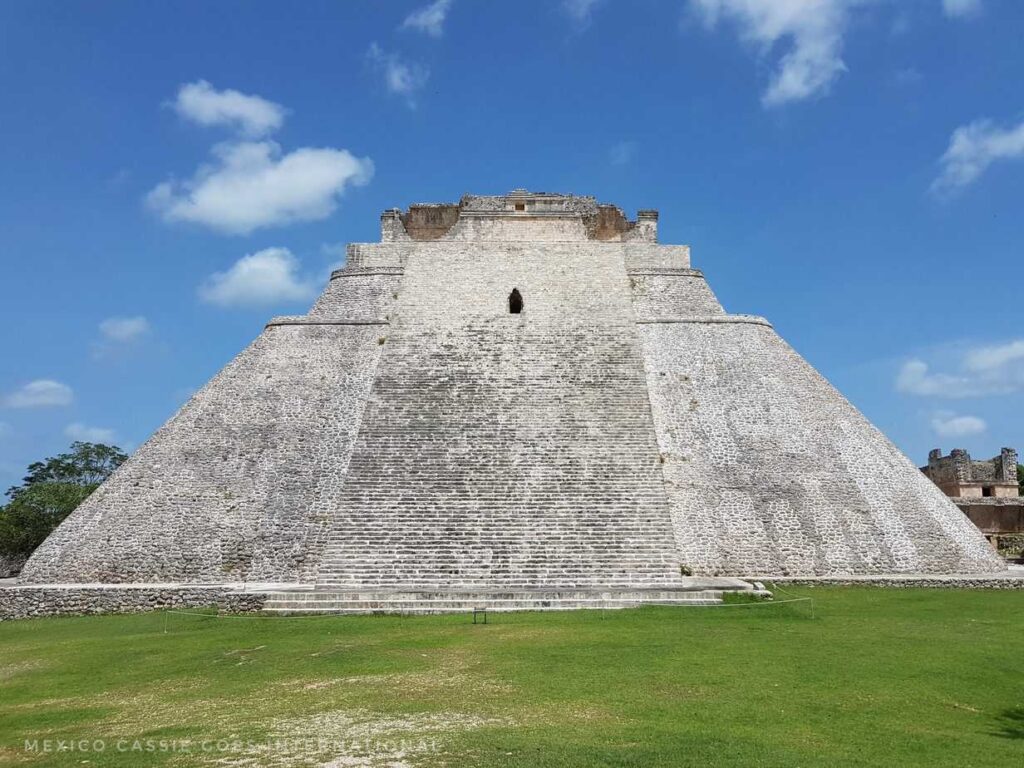
📌 About an hour’s drive from Mérida, one encounters the incredible Uxmal, which, like Chichen Itza, is a UNESCO World Heritage Site. It is a beautiful site that is fast growing in popularity. We have been half a dozen times and each time we see more and more people there. Uxmal is a very popular option for people who can’t face the crowds of Chichen Itza and only have a week or so in Yucatan.
Uxmal is regularly visited as a stand-alone site but it’s actually officially part of the Puuc route, a region of southern Yucatan where you can visit four sites (including Uxmal) and one set of caves – see below for more information.
The Sorcerer’s Pyramid / Pyramid of the Magician (pictured above) is the first thing you see when entering the Uxmal site. It’s a huge and very striking pyramid, which was built over a long period of time with successive stages being covered over with newer ones. The long building you’ll see towards the back of this magnificent site is the Governor’s Palace.
Note: You can climb a few structures at Uxmal but watch out for signs telling you where not to climb.
Where is Uxmal?
Highway 261, approximately 80km from Merida.
What is there to do Near Uxmal
➡️ Combine with a cenote visit to cool off after exploring Uxmal.
➡️ If you have the energy, check out one or two of the other sites in the Ruta Puuc.
➡️ Visit the excellent Choco-Story Museum across the road.
➡️ Stop for lunch in either Muna or Santa Elena (My recommendation is Finca Puuc jus outside Muna, it’s affordable, friendly and the food is great. There’s a pool on site too)
➡️ Drive to Becal, a small town just over the border in Campeche where jipi hats are made.
Hotel Recommendation Near Uxmal
⭐️ Uxmal Resort Maya – I have not stayed here but this is the hotel everyone has told me about, raved about and made me long to visit. Next time I’m in the area I will be staying here.
Top Tour Recommendations for Visiting Uxmal
⭐️ Transport only to Uxmal, Kabah and Cenote Peba
⭐️ Guided tour of Uxmal and the Choco Story Museum
⭐️ Transport to and from Uxmal, dinner and Uxmal Evening Video Mapping show
Dzibilchaltun
🚾
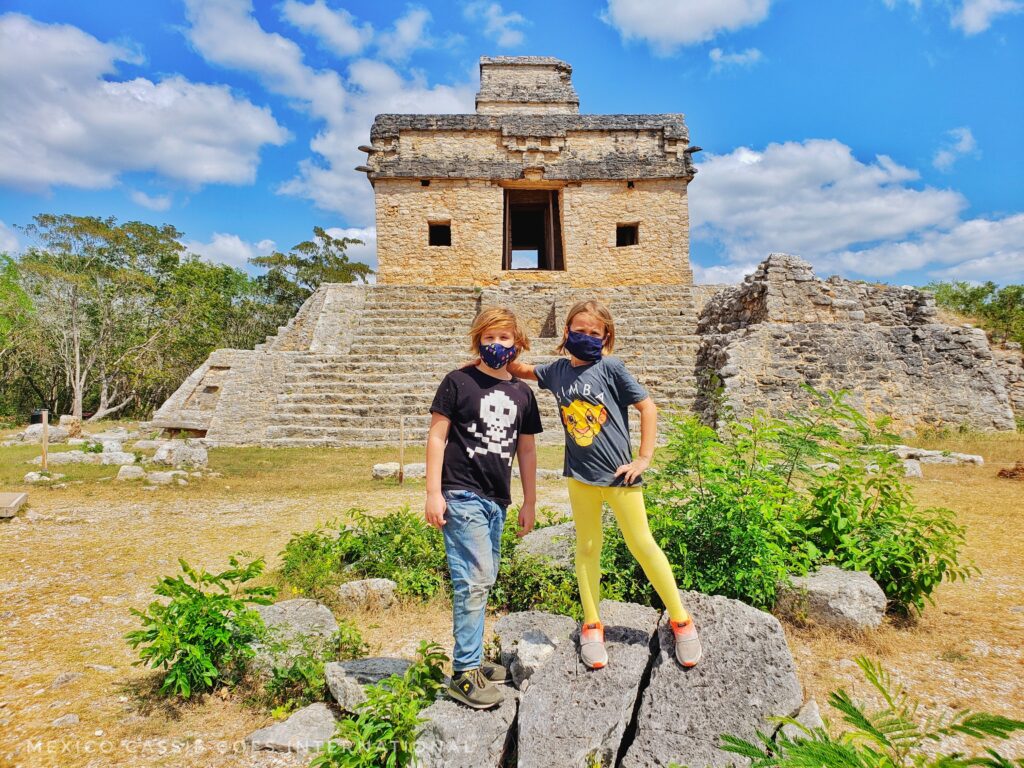
📌 Dzibilchaltun, just outside Merida, is a physically long site. It was home to over 8000 structures across 7.3 square miles. Many of the structures are no longer visible as they were houses built of perishable materials that haven’t withstood the test of time. Dzibilchaltun is one of the oldest remaining Maya sites in Yucatan. Dzibilchaltun was also the longest continuously utilised Maya administrative and ceremonial city, in use from around 1500 BCE until it was conquered by the Spanish in around 1540 CE.
Easily the most famous building in Dzibilchaltun is the House of the Dolls (photo above). People gather to watch the sunrise twice a year at the solstices. It’s also one of the oldest Maya buildings known to date.
Dzibilchaltun means “Place where there is writing on flat stones”
There is a beautiful open cenote on-site but it’s sadly no longer permitted to swim here so leave your bathing suit at home unless you’re heading to the beach after.
Note: You can climb some of Dzibilchaltun but not all of it. Be sure to follow the rules, the staff are extremely officious here.
Where is Dzibilchaltun
Dzibilchaltun is located between Merida and Progreso so if you’re staying in either town, it’s perfect for an easy trip.
What to Do Near Dzibilchaltun
➡️ Explore the gorgeous city of Mérida
➡️ Swim in a cenote or two
➡️ Head to Progreso or another wonderful beach along the Yucatán coast
➡️ Kayak in the Laguna Rosada, see the flamingos and salt flats
Hotel Recommendation Near Dzibilchaltun
People tend to visit Dzibilchaltun while staying in Mérida, where there are a host of excellent hotels from which pick.
Tour Recommendation for Dzibilchaltun
⭐️ Dzibilchaltun and Silcer Beach club day – Explore the ruins of Dzibilchaltun and then relax at a private beach club.
Ek Balam
🚾 🛍 🌮 💦
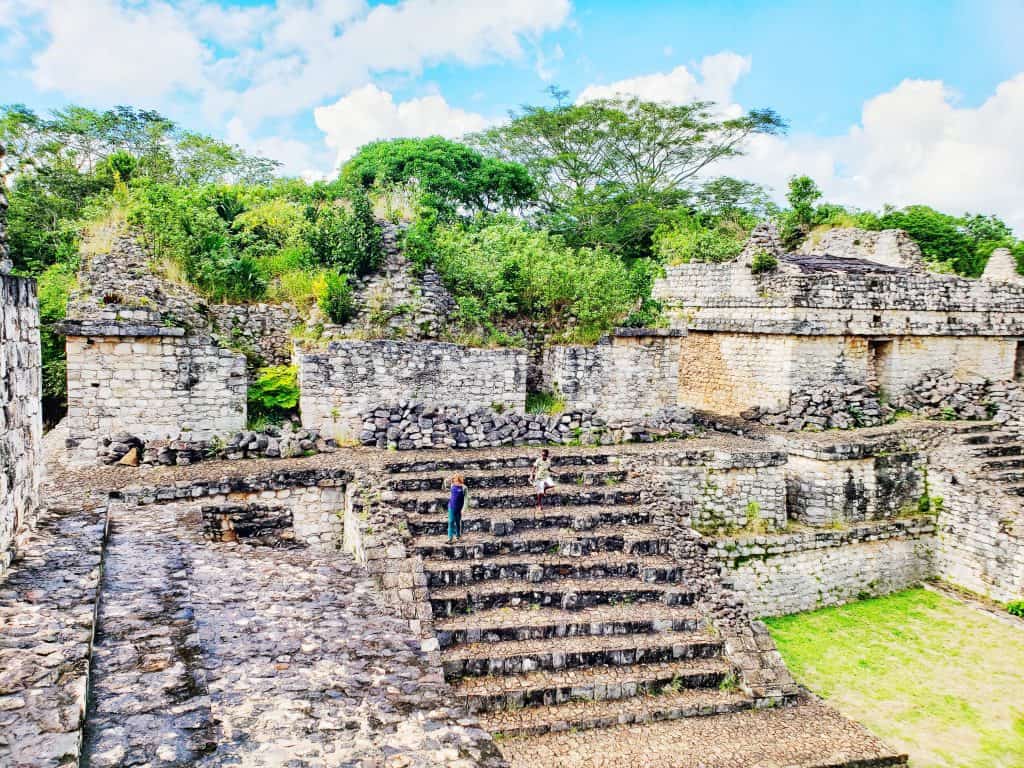
📌 Ek Balam is a smaller and less visited ruin to the north of Valladolid. Ek Balam means ‘Black Jaguar’ in Mayan.
This was the most important Maya city in the east of Yucatan. It was at its peak between 700 and 1200 CE. Ek Balam was abandoned in the eighth century and much of it is still covered with jungle but what has been excavated is wonderful. The highest structure is called teh Acropolis and it’s possible to climb all the way to the top.
Ek Balam is particularly interesting because it’s a mishmash of styles, some of which are not normally found this far north (Chenes, Rio Bec – see my article about Campeche’s ruins for more information on these styles of Maya architecture).
Note: You can climb the structures at Ek Balam.
Where Is Ek Balam?
Ek Balam is off highway 180 between Valladolid and Tizimin.
What to Do Near Ek Balam
➡️ Go the beach – Yucatán’s Emerald Coast has some incredible beaches
➡️ Get to know the trendy colonial city of Valladolid
➡️ Find a cenote for lunch and refreshing swim
➡️ Explore pueblo magico, Izamal or one of the other pueblos magicos in the area
Hotel Recommendation Near Ek Balam
⭐️ My absolute favourite hotel when visiting Ek Balam is Genesis Eco-Oasis. This is right nearby, feels like you’re in the jungle and offers a trule local experience without compromsing on quality.
⭐️ If you want to stay in Valladolid (the closest big city) then my favourite hotel is the Zentik Project, an adults only hotel with incredible subterranean and outdoor pools, gorgeous murals and a fab restaurant.
Tour Recommendation for Visiting Ek Balam
⭐️ From the Rivera Maya there are many tour options to Ek Balam. I like the look of this one that includes a day of exploring Ek Balam and cenote fun.
⭐️ Ek Balam, Community and Cenote Swim: From Mérida, this tour that includes meeting local community members and learning how to weave hammocks, make toritllas and more as well as a trip to Ek Balam and a cenote .
Izamal
🚾 🛍 🌮💦 (Izamal is a town so it has great facilities. The pyramid itself has no facilities)
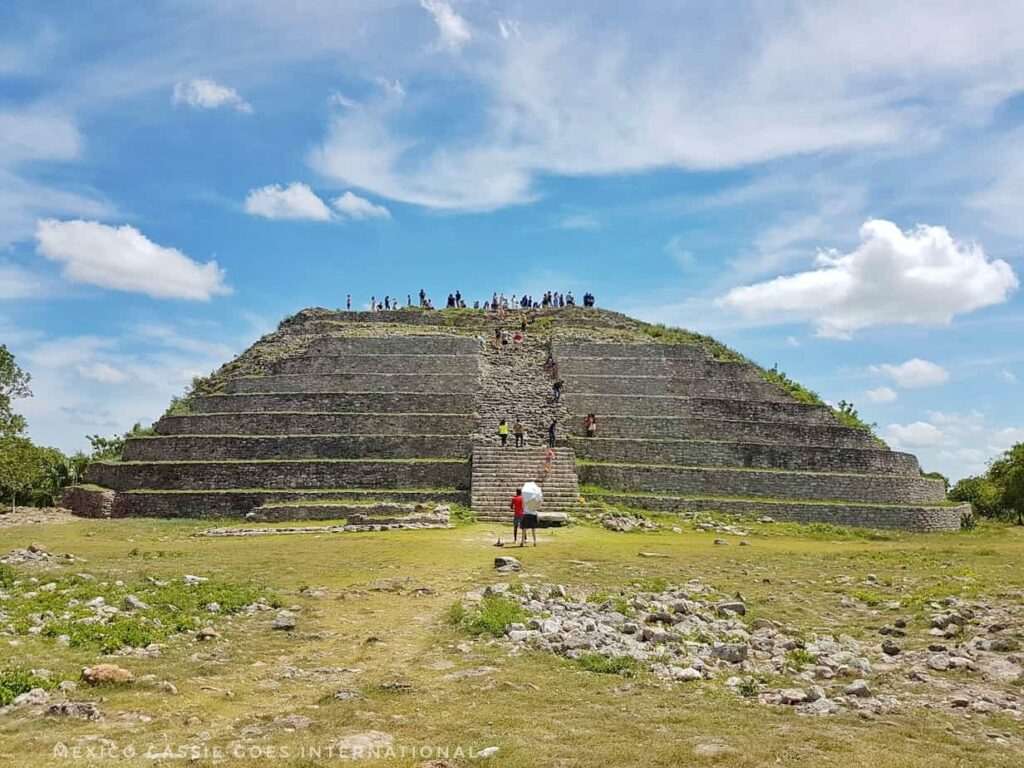
📌 This famous yellow city and pueblo magico is home not only to a convent but also to three Maya pyramids, all easily accessed while you’re in town.
Izamal was once an important ceremonial centre for the Maya in Yucatan and over 80 pre-Hispanic structures have been found thus far including Kinich Kakmo pyramid, the third-largest pre-Hispanic structure in Mexico by volume.
Frey Diego de Landa described the largest of all the pre-Hispanic buildings of being so huge that from the top you could see all the way to the sea.
Also in Izamal is Itzamatul, a pyramid site that my kids just loved exploring and climbing over. Habuk is an interesting, small site, but there was no information on offer there. The last two in town are called Kabul and El Conejo. There is a sacbé (sacred path) linking Izamal with Aké although this is no longer visible.
Where is Izamal?
Izamal is a small town between Mérida and Valladolid. It’s easily accessible from both cities.
What to do Near Izamal
➡️ Visit a cenote or the beach
➡️ Explore the colonial city of Valladolid
➡️ Head to pueblo magico, Motul for the famous Mexican breakfast of Huevos Motuleños with a side-order of local history.
Hotel Recommendation in Izamal
⭐️ There are a few good hotels in and around Izamal.
Mayan Ruins in Yucatan: The Less Well-Known Sites
Some of these sites are fairly easy to visit while others are obscure and deep in the Yucatan countryside. All are beautiful and all offer an extremely special opportunity to experience a Mayan ruin in (near) solitude
Mayapan
🚾 (head into the nearby village if you need snacks and drinks)
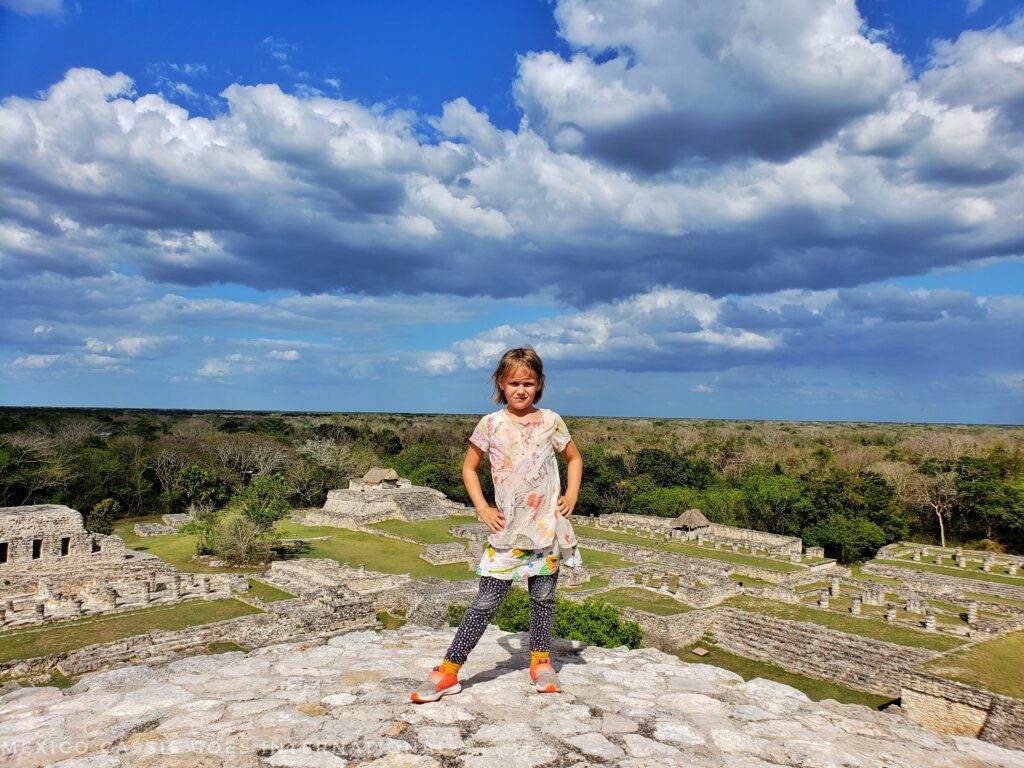
📌 Mayapan’s heyday was between 1220s-1440s, just before the arrival of the invading Spanish, when it was the political and cultural capital of the Maya people. It was abandoned during the 15th century, probably following a violent struggle.
It had been suggested that there was an alliance between the societies of Mayapan, Chichen Itza and Uxmal but recent research implies that this site developed later and actually dominated many regions in the north of the peninsula. It was probably the last major Maya city.
The main structure at Mayapan is the Pyramid of Kukulcan, which is similar to the pyramid at Chichen Itza, just smaller (and less well reconstructed). It stands almost 20m tall.
Be sure to find The Observatory (El Caracol), an unusual round building, unlike anything you’ll find elsewhere.
Mayapan is one of my absolute favourite archaeological sites in Yucatán. It’s never busy and there’s just the right amount to explore and climb before heading off to a nearby cenote for a refreshing dip.
Note: You can climb the pyramid and many other structures here.
Where Is Mayapan?
Highway 18 around 40km from Merida. Be sure to head to Mayapan the archaeological site, not Mayapan the village as they’re not the same thing.
What to Do Near Mayapan
➡️ Mayapan is a rural site but it is well paired with a cenote such as Noh-Mozon or Kankirixche.
➡️ Visit Cenote Hacienda Mucuyché
Tour Recommendation for Mayapan
⭐️ Mayapan and the Santa Barbara Cenotes – a great way to experience a spectacular ruin and three cenotes on one tour.
Xcambo
🚾
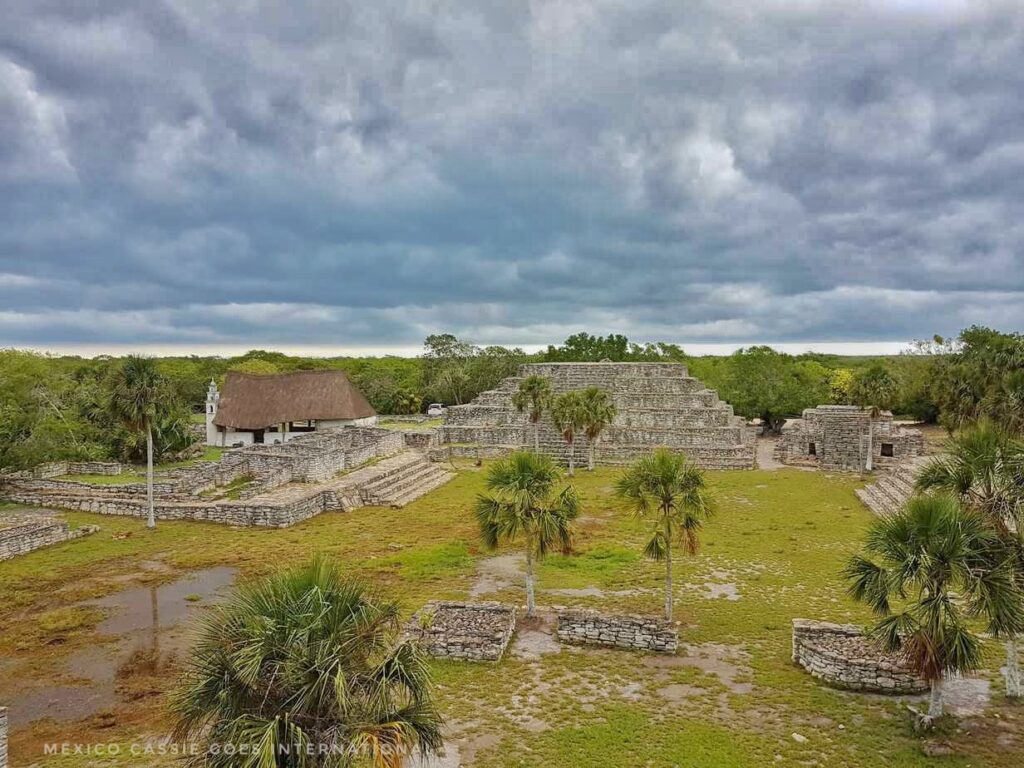
📌 Just outside Progreso on the north Yucatan coast, this small site is well worth a visit. The first time we visited, only four people had been there before us during the entire day and when we were there, we had the entire site to ourselves. This has been repeated every time we have been.
Xcambo is the biggest coastal Maya settlement. It was inhabited around 300 – 600 CE. There is a modern chapel built atop one of the Maya bases which is still used today. This was a salt and salted fish distribution centre, supplying larger Maya sites with much-needed supplies. In fact, on your way to Xcambo you can see the salt flats that are still in use today.
It’s obvious this site has been reconstructed more than many other sites but we found this incredibly interesting as it made us think more about how people will have moved around the place.
📌 Do note that there are often more mosquitoes here than at other sites so just take some bug spray and it’ll be fine.
Note: You can climb structures at Xcambo.
Where Is Xcambo?
Xcambo is just over the Dzemul-Xtampu bridge across the Laguna Rosada. If you’re coming from Progreso then it’s accessed via the 27.
What to Do Near Xcambo
➡️ The nearest big town to Xcambo is Progreso. This is a beach town with good restaurants.
➡️ Go to one of the many excellent beaches nearby.
➡️ Be sure to check out the salt flats and stop to see the flamingos along the Xcambo road.
➡️ Swim in the El Corchito cenotes
➡️ Visit the pueblo magico of Motul for the traditional breakfast of Huevos Motuleños
Ake
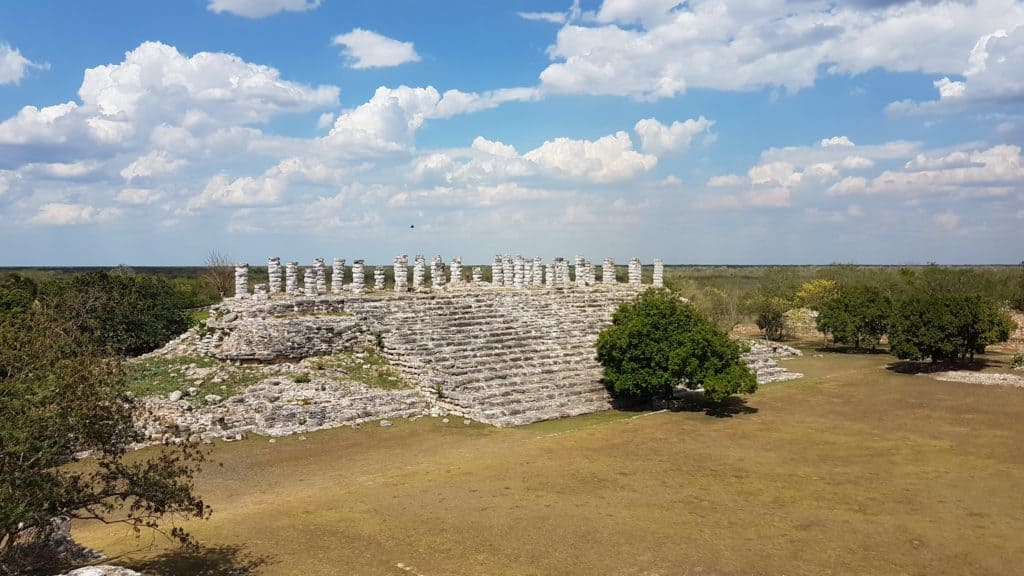
One hour east of Merida, just past Tixkokob, is the barely known archaeological site of Ake. When we went we had the entire place to ourselves. I could see that three others had been that day from the visitors’ book. Despite its relative obscurity today, Ake was one of the most important sites in the north of Yucatan at its zenith, from 600 to 1200 CE. It was finally abandoned around the mid-fifteenth century.
Ake was a residential area and is particularly known for its Puuc style of architecture. It is thought that the large structure with many pillars probably supported one of the largest thatched and wooden roofs in the whole of Mesoamerica.
A sacbé leads from Ake to Izamal, an important pre-Hispanic city. Because Ake is located between Thó (pre-Hispanic Mérida) and Izamal, it is likely that Ake was a geographically important location.
Investigations into the area suggest the settlement is around 1.5sq miles large, centering on the Great Plaza.
Note: You can climb on the structures at Ake.
Where is Ake?
Ake is just outside Tixkokob, one hour east of Mérida.
What to do Near Ake?
📌 There is a hennequin factory next door. During the week you can take tours around it. There’s also an abandoned factory (I think it’s abandoned) there too, which was fun to explore.
Hotel Recommendation Near Ake
⭐️ You could stay in the lovely Hacienda Ticum to make your stay even more fabulous. We stayed there as a present from my parents and absolutely fell in love with the peaceful atmosphere and great evening meal.
Acanceh
🚾 (on site) 🌮 💦 in the town, not on site.

📌 You’ll probably drive through Acanceh town many times before you stop to examine the ruins. The town is on the way to Homun, home of the famous cenote ring. I’m telling you though,that it’s a site worth stopping form.
Acanceh means ‘Call of the deer’ in Mayan and the site was never fully abandoned as a Maya site. The pyramid is situated right on one side of the pueblo’s plaza, making it a town pyramid, like those of the famous yellow city of Izamal.
The early pyramid here was built between 700 – 300 BCE and has some absolutely incredible masks (today, five, originally eight). There is a second pyramid built over the first but sections were removed (in the 90s?) to allow people to view the masks. They are visible from platforms built around the top.
Apparently there are over 160 buildings that have been found via archaeological survey, obviously not all have been uncovered. There is a second, climbable pyramid on-site, too. The Palace of the Stuccoes is a few hundred metres away.
Where Is Acanceh?
Acanceh is a short drive from Mérida, around 45 minutes by car along highway 18. It makes a good stop off on the way to Homun’s cenote circle or the famous Santa Barbara cenotes.
What to do Near Acanceh
➡️ Most people will choose to pair a this ruin with a trip to the Homun cenote circle for a day of cenote swimming and relaxation
The Ruta Puuc
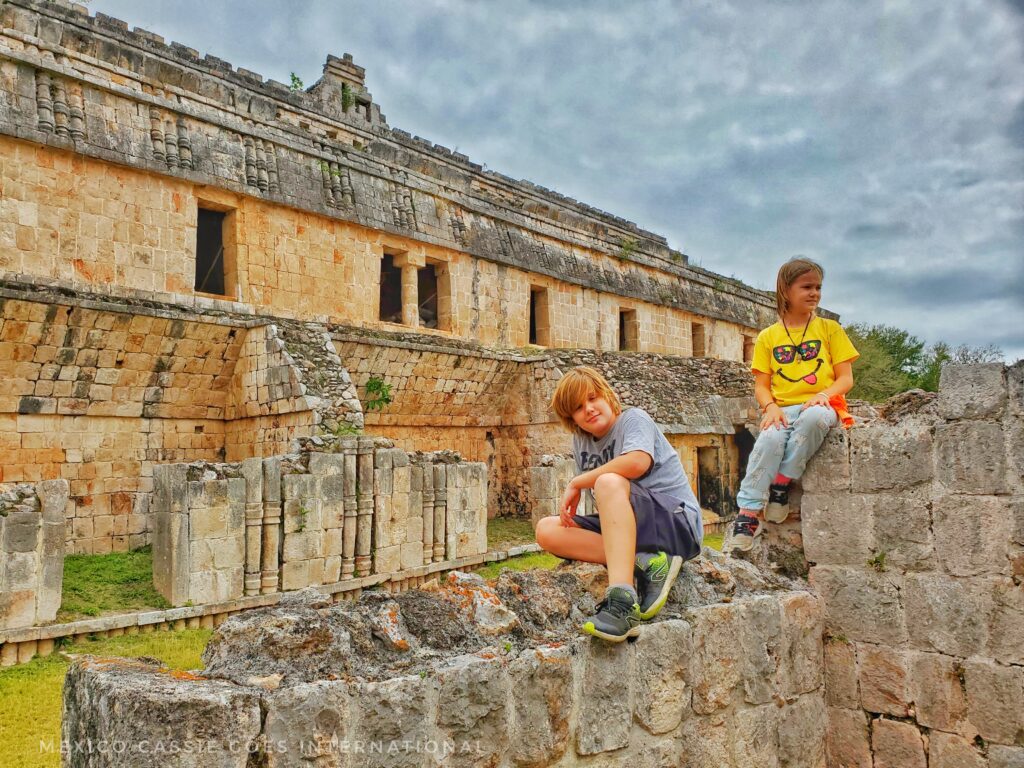
Because the Ruta Puuc sites tend to be visited in a block all in one day, I shall deal with them more or less as a group. The most important thing to know about the Ruta Puuc is that the sites are gloriously under-visited, which is great for you if you’re excited about visiting archaeological sites and really feeling their magic and atmosphere. Personally, there is little I love more than exploring a deserted Mayan ruin.
Puuc is the Mayan word for hills and although you’d be forgiven for laughing at the idea of hills in Yucatan, it is slightly hillier here than anywhere else in the state.
The Ruta Puuc sites are:
📍 Kabah: Kaba was inhabited for around 200 years between 750 – 950 CE and was an important city in the area. It’s the closest of all the Ruta Puuc sites to Uxmal and the site is split by the road. Be sure to visit both sides. It is thought there was also a sacbé (elevated road) between Kabah and Uxmal in one direction and Labná in the other.
📍 Sayil: My favourite of the Puuc sites. It is best known for its huge Palacio (apparently 85 m long) and its enormous expanse of grass in front. We also explored other sections of this site, which require a willingness to walk around. We checked out El Mirador and Grupo Sur.
📍 Xlapak: Xpalak means ‘old walls’ in Mayan. The architecture here is very typical of this region.
📍 Labná: Labná was a small population site dating from around 750 – 1000 CE. It is a truly stunning place and well worth a visit. Most people interested in Maya sites will have seen photos of El Arco (below), an arch that once will have separated two buildings. Labna was built in the purest Puuc style. In Mayan, Labna means ‘old house’.
There are more photos of the incredible Ruta Puuc sites here
Where is the Ruta Puuc
From Mérida, head out on the 261 towards Uxmal and Santa Elena. On the left you will see a turning for the Ruta Puuc. Just before the Campeche border is a left turn to the Ruta Puuc sites (Kabah is actually on the 261 before the turning).
Chacmultun
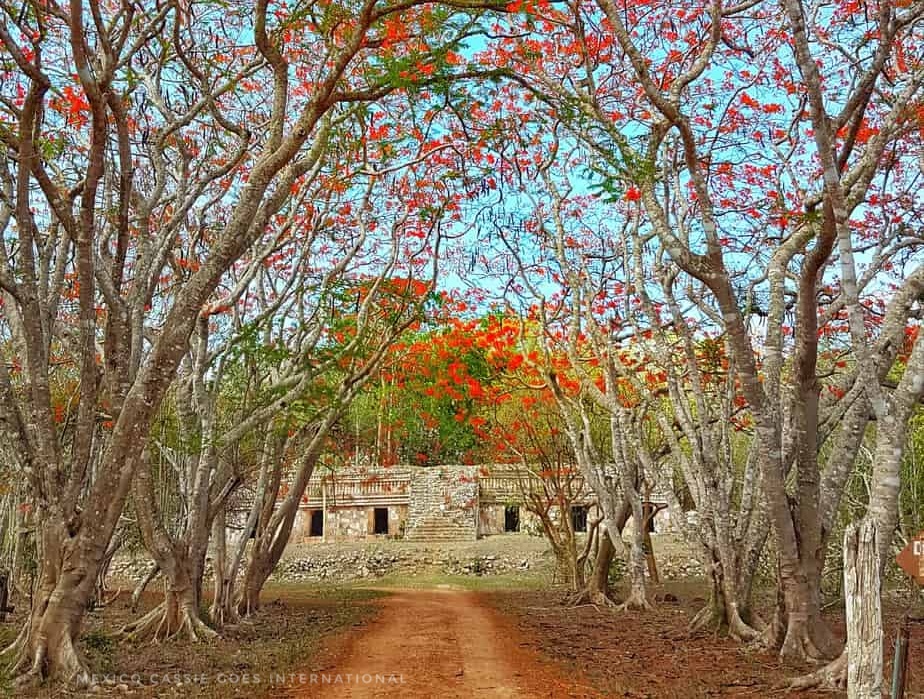
📌Chacmultun is located in the hilly southern Yucatan near the pueblo magico of Tekax. It boasts a view out over the plains of the north as well as to the southern region. Chacmultun was built in the Puuc style.
The site was inhabited from 300 BCE and it peaked between 600 and 1000 CE. It ceased to be occupied until around 1500 CE.
Like so many other sites in Yucatan, water was a primary concern. In this area, rainwater was collected in ‘chultuns’ (sartenejas in Spanish and cisterns in English). There are no cenotes around here for easy access to water. It is thought that Chacmultun was a paper producing site.
If you look over the hill on your left you’ll see a perfect-looking Maya building. We didn’t get to it although we did drive as close as we could but it was hot and we had an appointment in Tekax so didn’t have time to climb up the hill. I wish we had though.
It feels as if Chacmultun (according to my kids) goes on forever. They felt as if they could explore and never find the end. I particularly loved the walk from the carpark to the main site because the view was completely framed by flamboyan trees and it was magnificent.
Where Is Chacmultun?
Chacmultun is twenty minutes from Tekax along the Carretera Kanek. Drive through Kanek/Canek and follow signs in Kancab towards Chacmultun. It’s two hours from Merida if you’re coming straight from there.
Oxkintok
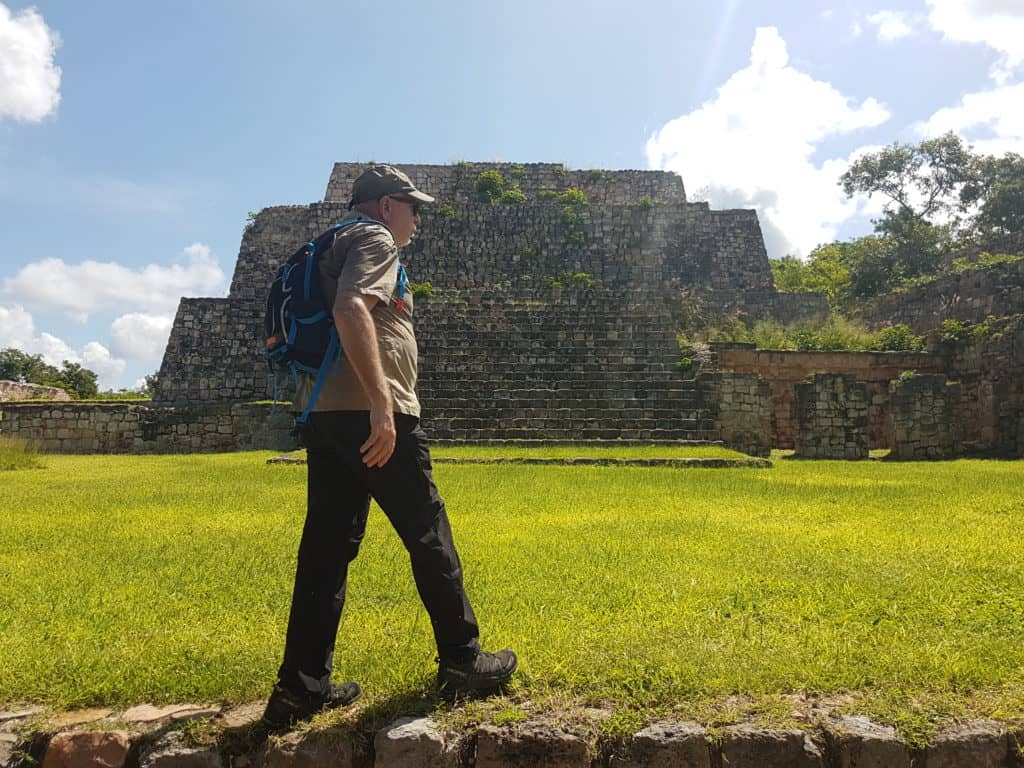
📌 Oxkintok is not on the radar of most visitors to Yucatan. However, if you’re looking for a quiet site where you’re almost guaranteed not to have to share it with others, then it could be just what you’re looking for.
Oxkintok is one of the very oldest Maya ruins there is. On-site you can see a variety of different architectural styles, which apparently tells us a lot about influences from other areas.
Where Is Oxkintok?
It is about one hour 15 minutes from Merida to Oxkintok. To get there take the 180 south and go through the town of Maxcanú.
What to do Near Oxkintok
➡️ Visit the Grutas de Calcehtok
➡️ Learn about Jipi hats in Becal
➡️ Visit the famous Pomuch graveyard and learn about their fascinating and different Day of the Dead customs
Isla Los Cerritos

📌 Just off the coast of San Felipe on the north Yucatan coast, is Isla Cerritos. This island was once enormously important to the Maya who lived in Chichén Itzá. It was control of this island that allowed them to control the Gulf trade routes.
Today, there is nothing historical to see. You can’t walk on the island and the 32 pyramids that were found on the island have been reburied and the artefacts taken to museums. The island is in a biosphere and it really belongs to the thousands of birds who live on it.
Where Is Isla Los Cerritos?
The 176 to Tizimin from Merida towards Río Lagartos and then drive along the Carretera for San Felipe until you hit town. Hire a guide and lancha (boat) to take you to the island.
What to do Near San Felipe and Isla Los Cerritos
➡️ Take a tour of the ría (estuary) and mangroves
➡️ Visit the pink salt lakes at Las Coloradas
➡️ Enjoy the beauty of one of the best beaches in Yucatán, El Cuyo beach
Maya Ruins In Yucatan: Other
- Yaxuna: a small site near Valladolid that is linked, by sacbé, to Coba.
- Kuluba: Just outside Tizimin on the way to Las Coloradas and El Cuyo is Kuluba. I haven’t yet visited and believe it only opened to visitors in 2018.
- There are another ruins across the state and even in Mérida that remain unrestored.
⭐️ Great Road Trips Around Yucatan⭐️
🚗 Off the beaten path in Yucatan
⭐️ Is Mérida worth it? – A question many ask and we’ve answered for you
Which is your favourite Mayan ruin in Yucatan? Why?
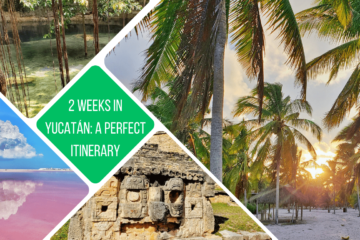
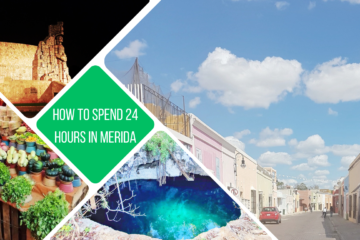
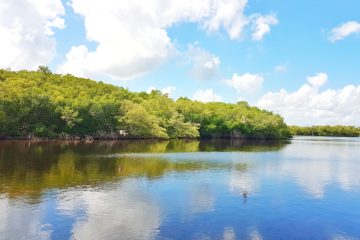
14 Comments
Ann · 03/05/2019 at 2:11 pm
Amazing information. I have visited some of the ruins in Mexico City ans was awestruck by how large they were. truly magnificent!
Kit · 03/05/2019 at 11:08 pm
Thanks so much for this comprehensive post. I will need this in December–I can’t wait to see some of these ruins!
Candy · 04/05/2019 at 7:39 am
I love the Yucatan! But the only Mayan ruins I’ve visited where in Belize. This is a fantastic guide to use when I have the opportunity to visit some others. Thank you!
Cassie · 04/05/2019 at 8:26 am
Hope you get to see our sites, they’re amazing.
Lori Tripoli · 04/05/2019 at 9:21 am
I am so fortunate to have visited Chichen Itza in the 1980s when visitors still could ascend the pyramid. It was scary, though–those stairs are steep and narrow. Thanks for sharing lots of other options for seeing Mayan ruins in Mexico.
Cassie · 04/05/2019 at 11:20 pm
Yes that was lucky. I love hearing about how people climbed up. Have you visited any of the others on the list?
Emese · 04/05/2019 at 10:31 am
A great post about my favorite sites in Yucatan – yes, I visited them all, except Xcambo. You got me on that one, I didn’t think there were any Mayan sites in the Yucatan I haven’t seen ;). Though I’m partial to Ek Balam (since I literally saw it being dug out and reconstructed over the years), my favorite on this list is Uxmal, not only its Pyramid of the Magician but all the other structures with their amazing facades.
Cassie · 04/05/2019 at 11:19 pm
How amazing. How come you saw it being dug out? Wow.
Dylan · 11/05/2019 at 7:15 am
I had no idea there were so many ruins *just* in the Yucatan! I hadn’t even heard of most of these. I’ve been super slowly making my way to different ruin sites in Mexico, but I feel like it would take me years to see all of these without burning out along the way.
Cassie · 11/05/2019 at 7:26 am
They’re all fabulous though. I mean, I wouldn’t spend my two week trip just visiting these sites but living here, we still get excited every time we visit a new one (Or return to a favourite site).
kesi irvin · 11/05/2019 at 6:23 pm
Mayapan looks extra interesting. I think that would be the first one I wanted to check out !
Mike B. · 11/06/2019 at 10:52 am
What a wealth of information. Thank you for sharing. Will definitely check out several of these sites. Just to mention, no all ruins are INAH managed. We visited one outside of Tequila that was managed by the state of Jalisco.
Cassie · 11/06/2019 at 10:57 am
Thanks. And you’re absolutely right that not all are managed by INAH. I’ve also visited some that aren’t. Generally though, locals don’t want people traipsing through their villages to ‘their sites’ because that may well be followed by INAH and then them losing access to their places of relaxation and history. I’ve chatted to a number of Maya people about this when visiting with them
I’ve chosen not to mention these sites deliberately.
norm · 29/08/2020 at 8:39 am
Xcambo has features that no other Maya sits have: The little stone lined pits are not found elsewhere, the dock/ pier area with its fresh water spring and vast storage platform are just not found anywhere else in Mayaland.